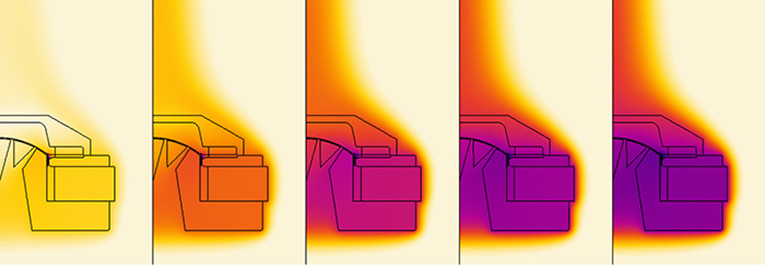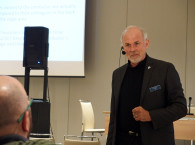
This is a seminar, held by Marco Baratelli and Grazia Spatafora, showing the results of work carried out by Faital's research and development department in San Donato Milanese. In the first phase the presentation will describe the thermal performance typical of compression drivers and the possibility of predicting their behavior in the design phase through FEM simulation.
In the second part, they will underline how the results of this predictive study on thermal simulations have been confirmed in the experimental phase, thus allowing application of this model in the future design of other drivers.
The workshop starts by considering that, although a compression driver for the reproduction of high frequencies is an efficient electroacoustic transducer, it converts a very high quantity of the energy it receives into heat. It is therefore essential to ensure that each driver in the design phase is able to withstand the power needed to be achieved, dissipating most of the generated heat.
Also considering the fact that woofers are able to dissipate heat better thanks to a larger cone excursion, while in compression drivers the diaphragm undergoes very minimal movements, the study will explain how it is possible to anticipate at what temperatures the coil and the magnetic circuit will operate and therefore avoid permanent damage.
This is directly influenced by the geometry of the device and the materials used, which allow an estimate of the effect of dissipative phenomena (conduction, convection and radiation). The model works by assigning to the project the actual power at which the speaker must work and by knowing how much of this power is not transformed into an acoustical power but transformed into heat.
From here it is possible to see at what temperature the coil works, then understand how the driver reacts and eventually make corrective actions, if necessary, so reducing the number of prototypes needed during the design phase.

As Flavio Naggi, Commercial Director of FaitalPRO, emphasizes: "We have focused on the development of this theoretical predictive model using Finite Element Analysis that allows us to accurately predict the working temperature of a professional driver. This process allows us to improve the design of magnet assemblies to better manage the thermal aspect of a working loudspeaker.
"The numerical models developed on some existing drivers have been validated by experimental measures assessing a difference between real temperature and simulated results by the model of around 5%. In short, a great success in the validation of our measures applicable to all our future loudspeaker designs."
Faital will present this technical paper twice: in the afternoon of May 23 during a dedicated technical session and also the next morning, on May 24th, 10.00-10.45am on the PSE Stage.
www.faital.com | www.faitalpro.com






